Ducky keyboards are widely popular and often touted as one of the best options on the market.
But are they actually good?
Ducky keyboards are good enough for some of the world’s top gamers such as Tfue and Ninja.
Should you choose a Ducky board too?
Let’s take a closer look at what makes Ducky a gamer and community-approved brand.
Reasons To Choose Ducky
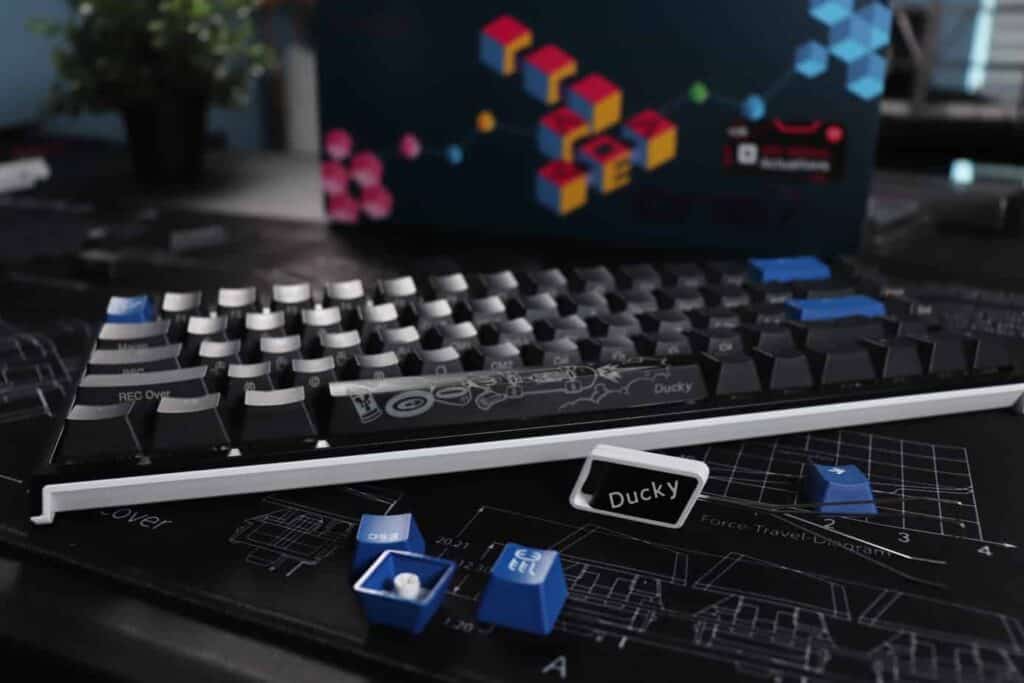
Ducky is a brand that is well-respected in the mechanical keyboard community, but you might ask yourself:
“How can a smaller Taiwanese brand I’ve never heard of be better than most gaming keyboards?”
With popular options like Razer, Corsair, and Logitech dominating the market, many people have been seduced by gaming peripherals.
“Gaming” has become synonymous with higher performance, higher quality, and higher prices.
When you dig a little deeper, though, you start to see that bigger brands may not have all the options you actually need, and might sell you on features you really don’t need at all.
Ducky gives you all the speed you need, with added customization and layouts that you can’t find on the competiton’s boards.
Customizable Keycaps
One of the biggest flaws with gaming keyboards is that many of the offerings from the “Big 3” (Corsair, Razer, and Logitech) all seem to have non-standard sizes for their keycaps.
This makes it incredibly difficult to find aftermarket keycaps that will fit your keyboard.
This includes the spacebar and modifiers keys like “ctrl” and “alt”.
Ducky, however, features standard sizes that you can find keycap sets for with no issue.
Ducky even makes several beautiful, fun options to give you something that most gaming keyboards can’t: color.
One of the more popular and fun colorways is the Frozen Llama.
Frozen Llama sports a cyan, teal, and magenta colorway that separates itself from the same black keyboards with RGB wave-effect lighting.
For TFUE fans, Ducky collaborated with the gamer for a TFUE-themed set of keycaps.
Ducky also includes a free set of colored accent keycaps included with every Ducky keyboard.
Ducky even releases a new Chinese Zodiac themed colorway every year for Lunar New Year. This includes fully themed keyboards.
Unique Size Layouts
| Ducky Keyboards | Layout Size |
|---|---|
| One 2 Mini | 60% (61 keys) |
| One 2 SF | 65% (67 keys) |
| One 2 TKL | 80%/TKL (87 Keys) |
| One 2 | Fullsize (108 keys) |
| One | Fullsize and TKL |
| Zero | Fullsize (108 keys) |
| Mecha | 60% (61 keys) |
| Mecha SF | 65% (67 keys) |
| Shine | Fullsize (108 keys) |
| Numpad (23 keys) |
Ducky provides its keyboards in a number of sizes and layouts, so you should be able to find a Ducky keyboard that matches your needs and desk space.
The standard layouts like full-size, TKL, and compact 60% are all available, but you also get several 65% options with different layouts and colors like the Ducky One 2 SF, and the Ducky x Varmilo Miya Pro.
You may not be familiar with the 65% layout.
If you find you don’t really use the function-row on a TKL, a 65% is the perfect compromise between size and functionality.
You get the compact footprint of a 60%, but still get your dedicated arrow keys and even a small navigation column for speed and convenience.
65% layouts are typically harder to find sets for that are affordable, colorful, and well-made. Ducky has you covered by offering caps for all of their layouts.
Very Powerful Firmware
The firmware on a Ducky board makes it great for those who don’t want to mess around with software, or professionals who can’t install programs on work computers.
Thanks to the built-in firmware, you are able to program and customize your keys and layouts directly on-board, on-the-fly and on-demand.
DIP switches are included on the bottom of Ducky keyboards.
DIP switches are used to toggle and change different key positions and layouts, so that you can easily keep track of the modifications you make from default settings.
Simply toggle the switches to make your changes.
You can edit the RGB lighting profiles directly and without software as well. You can select one of a few profiles that you can edit, and customize your lighting in real-time.
If you can’t install software on your machine, or simply don’t want to deal with bloated or unnecessary software, Ducky boards are a fantastic option.
Great Build Quality
Ducky build quality, especially in the One 2 Mini and Mini SF, are quite exceptional for a plastic pre-built keyboard.
If you’re looking for a more sturdy build, the Ducky Mecha and Ducky Shine series feature aluminum cases for added weight, strength, and stability.
Ducky keyboards come stock with Cherry-style stabilizers that, while not perfect, are great for pre-built keyboards and better than the majority of gaming boards.
Paired with one of the many switch choices, and fast 1000hz polling rates, you will be sure to have a great gaming and typing experience.
Ducky keyboards also include two sets of thick plastic feet that act as kickstands.
You won’t have to worry about much deck flex or flimsy lightweight keyboards moving around on your desk.
Typically the only gripe about Ducky build quality is that the USB-C port is a bit short, and may cause your cable and plug to feel a bit loose.
Reasons You Might Want To Avoid Ducky
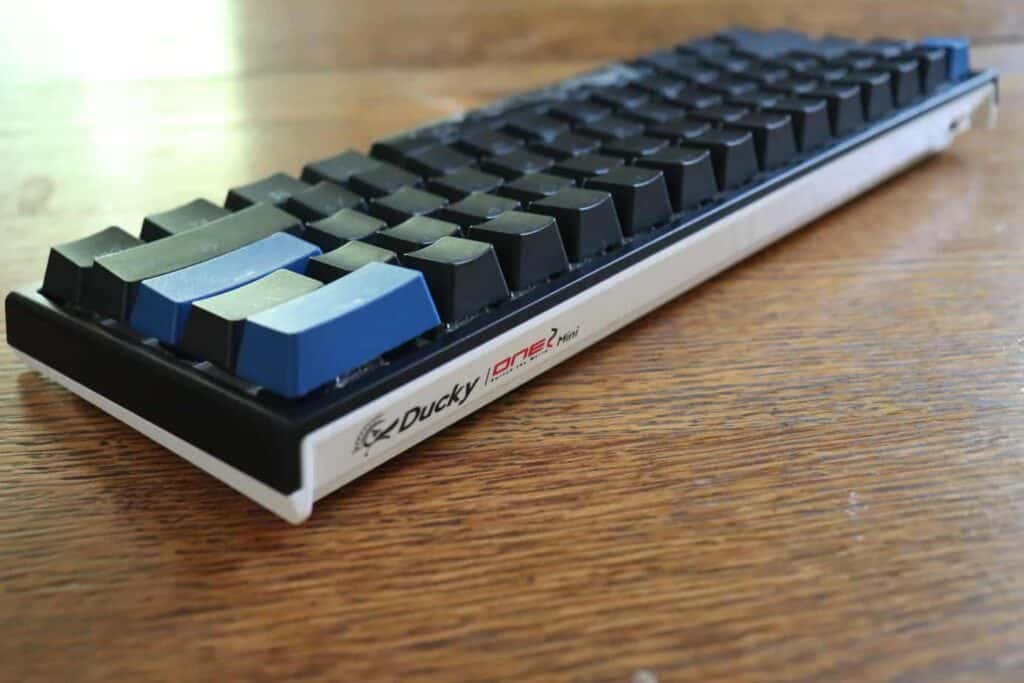
A Lack of Software
One of the Ducky’s strengths may also prove to be a weakness.
Ducky keyboards may be programmable on-board, but this strong firmware comes at the cost of software.
While the onboard programming is quite powerful, it still feels quite tedious and un-intuitive to program without your manual out at first.
The lack of software means you lack a simple, visual way to set your layout, macros, and RGB lighting effects.
Instead, you will have to consult the manual and test to see if your settings have saved.
Again, while not the worst thing in world, it can definitely be pretty tedious.
No Wireless Options
Wired USB is the only way to connect a Ducky keyboard to your computer.
Gamers may not mind the lack of Bluetooth, but for others the lack of any wireless connectivity may be a deal breaker.
While some setups would certainly not see any benefit from a wireless keyboard, Ducky keyboards may not be the best option if you’re looking for a mobile, travel, or un-tethered option.
Cable Length Trouble
Be aware that some Ducky boards, like the One 2 Mini, may also have trouble being powered by long custom USB-C cables.
Space Cables recommends a max of 5 ft coiled and 13 feet uncoiled.
This is also a known issue on Drop and HHKB keyboards.
No Hotswap Sockets
Hotswap sockets are becoming an ever-popular feature of newer keyboards.
Hotswap is great for beginners and enthusiasts because it allows you to try multiple switches without needing to solder or de-solder. Such modularity also comes in handy for replacing broken switches.
While Ducky keyboards do offer a ton of switch choices, you will be locked with your choice unless you know how to use a soldering iron.
Older Designs
Ducky’s keyboards can actually look quite modern and fun, especially the compact Mini and SF layouts.
The larger fullsize and TKL keyboards, though, can seem quite dated and boring in comparison, featuring larger bezels, sharper edges, and greater exposed surface area that could make your setup less clean and aesthetic than it could be.
Ducky also offers many “historical” models in their lineup in the Ducky Zero, as well as alternative lines like the Mecha and flagship Shine series.
This could lead to some confusion as far as which version to purchase.
If you want sturdy aluminum builds, go for the Ducky Mecha and Shine keyboards.
For the fun, affordable keyboards and most recent lineup, look no further than the One 2 Mini, One 2 SF, and Miya Pro.
The Best Ducky Keyboards
There are many Ducky keyboards to choose from, but the One 2 series is the one to look for.
Of the One 2 series, the Mini and Mini SF are our picks for the two best Ducky keyboards. We chose them not only for build quality, but style, size, and efficient layout.
Ducky One 2 Mini
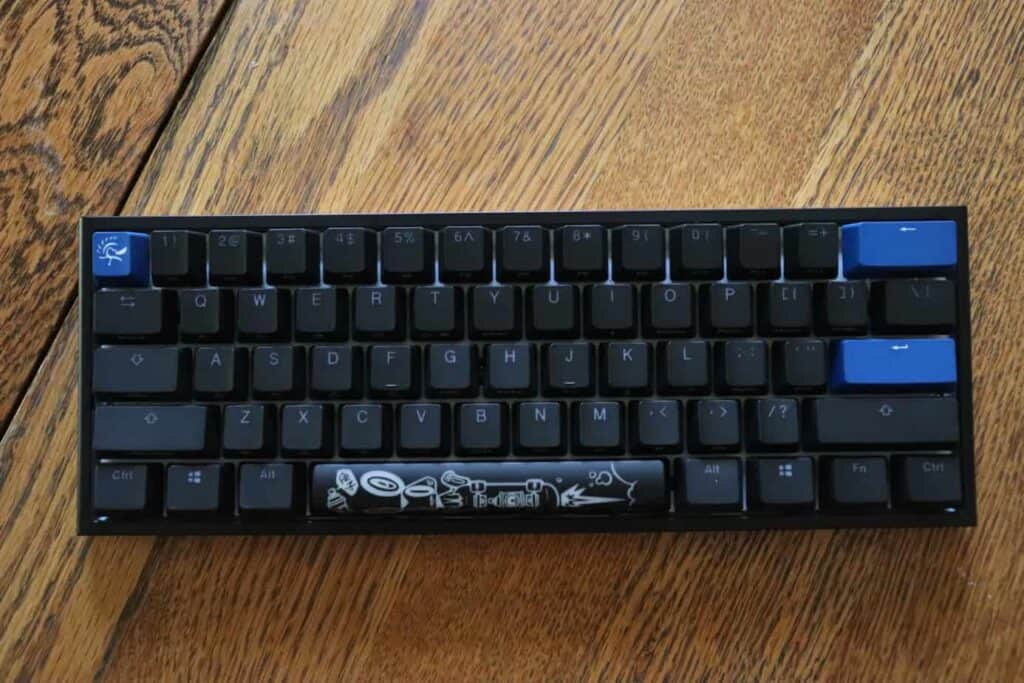
The One 2 Mini is the most compact layout that Ducky offers, and the choice of godly gamers Ninja and TFUE.
The One 2 Mini is a 60% layout that comes in fun colorways and solid stabilizers from the factory.
There is even a collaboration with Hyper-X that features the faster Hyper-X Red gaming switches and an edgy black-and-red colorway.
At a 1000hz polling rate, compact design, and your choice of Cherry MX switches, the Ducky One 2 Mini will have you covered for any situation.
The One 2 Mini may have issues with power if you are using a cable longer than 13 ft uncoiled, so be aware.
You can check out the Ducky One 2 Mini for a good price.
Find out what makes this board Ninja’s choice.
Ducky One 2 SF
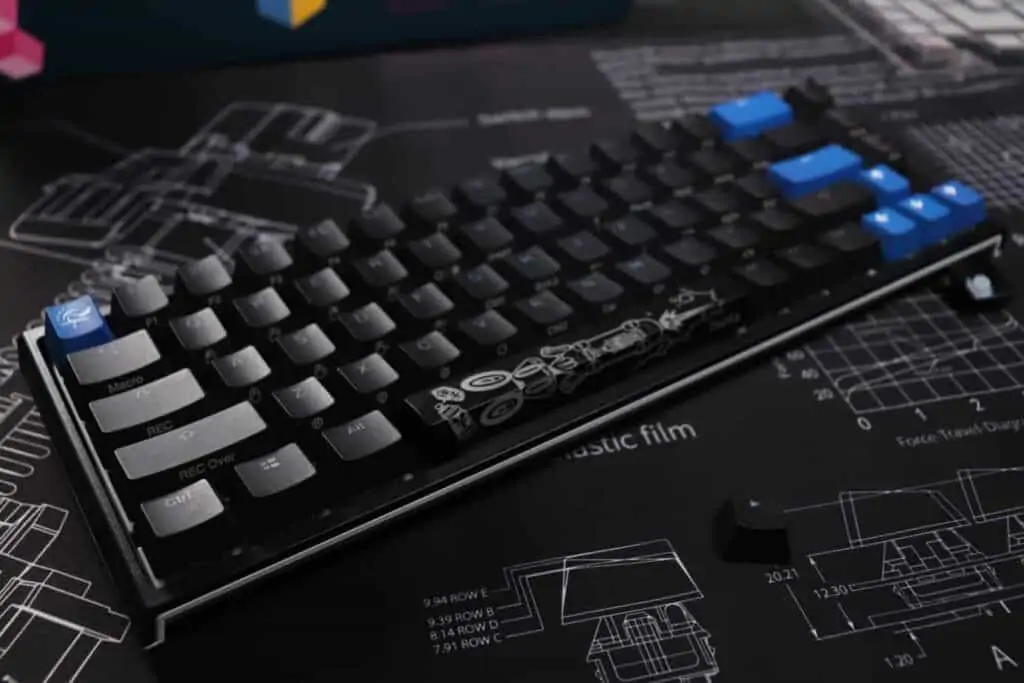
The One 2 SF is perfect if you want the compact efficiency of a 60%, but aren’t ready to give up your arrow or navigation keys.
The layout has 67 keys, and is only one column wider than the Mini, so you don’t lose much more desk space or mouse positioning.
The One 2 SF is otherwise very similar to the One 2 Mini, offering the same great build quality, speed, and switch choices (other than the HyperX edition).
Check out the Ducky One 2 SF if you’re interested in an incredible gaming keyboard.
Ducky X Varmilo Miya Pro
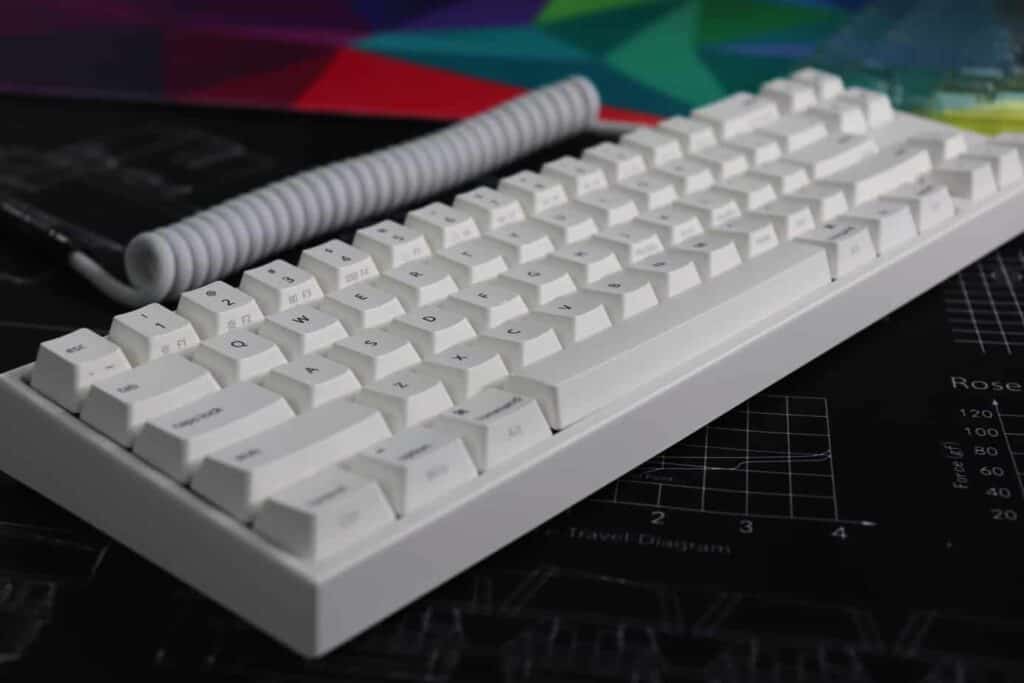
A collaboration with Varmilo, the Ducky x Varmilo Miya Pro is a 65% layout with 68 keys and some of the best stabilizers you will find in a Ducky keyboard.
Available in multiple colorways including a beautiful pink-and-white. All keycaps are standard sizing for easy compatibility.
Check out the Miya Pro for one of the best 65% keyboards money can buy.
Conclusion
Yes, Ducky keyboards are quite good, especially when considering the firmware, build quality, and potential of personalization.
If you’re looking for a great keyboard for an affordable price that many have used for everything from typing to competitive top-tier gaming, Ducky keyboards are up to the task.
It’s important to make the best choice you can with the money you have, and we hope this shed some light on the Ducky brand to help you make a more informed decision.
For more help, check out this guide on how to choose a mechanical keyboard.
Thank you for reading, and have a nice day 🙂
Quack
